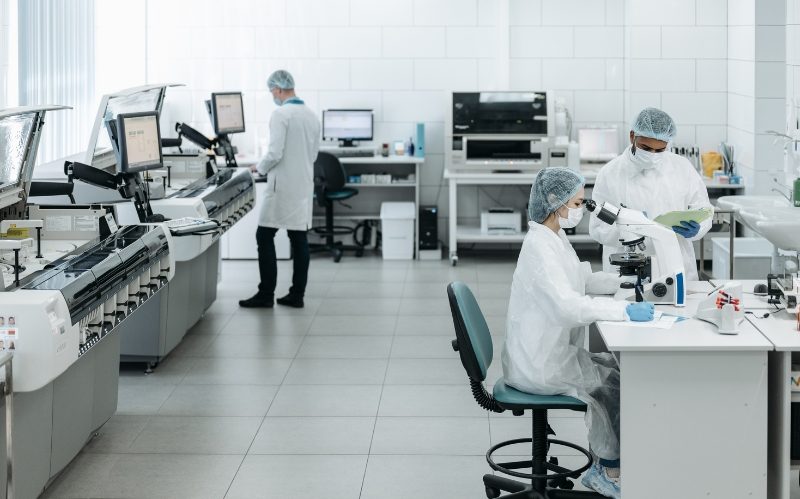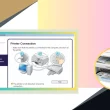Introduction
The global laboratory information system market reached a value of USD 2.10 billion in 2024. Aided by the increasing digitisation of healthcare infrastructure and the growing demand for efficient laboratory operations, the laboratory information system market size is projected to grow at a robust CAGR of 9.00% during the forecast period of 2025-2034, reaching a projected value of USD 4.97 billion by 2034.
A laboratory information system (LIS) is a software platform designed to manage, record, and store data related to laboratory processes and patient diagnostics. It facilitates smooth information flow between laboratories, hospitals, and other stakeholders while streamlining the management of test orders, specimen tracking, and report generation. With the rapid digital transformation of healthcare, LIS has become an indispensable tool for enhancing laboratory productivity, reducing errors, and ensuring compliance with regulatory standards.
The rising global focus on improving healthcare quality, coupled with the demand for precision medicine and the increasing burden of chronic diseases, is significantly boosting the adoption of LIS solutions across diagnostic laboratories, hospitals, research institutions, and academic facilities. Furthermore, as laboratories seek to minimise turnaround time and improve patient outcomes, the integration of LIS with electronic health records (EHRs), laboratory automation systems, and data analytics tools is gaining considerable traction.
What is a Laboratory Information System (LIS)?
A Laboratory Information System is a software-based solution used to manage and organize laboratory data, such as test results, patient information, and inventory records. LIS helps laboratories automate tasks, improve data management, ensure compliance with regulations, and enhance communication between laboratory staff and healthcare providers.
With advancements in medical technology, the role of an LIS has expanded beyond simple data management. Today, LIS supports real-time data analysis, integrates with other hospital systems, and allows for secure data sharing. This increased functionality has made LIS essential in both clinical and research laboratories.
urrent Laboratory Information System Market Trends
The laboratory information system market is currently experiencing significant growth, driven by various factors. These trends highlight the growing need for improved lab management systems across various industries.
- Integration with Electronic Health Records (EHR): One of the most prominent trends in the LIS market is the integration of laboratory systems with Electronic Health Records (EHR). This integration improves communication between healthcare providers and labs, streamlining workflows and reducing errors. By integrating test results directly into patient records, LIS allows for faster diagnosis and treatment.
- Cloud-Based Solutions: Cloud technology has transformed the way laboratory information systems operate. Cloud-based LIS solutions allow labs to store data remotely, reducing the need for on-site infrastructure. These systems offer better scalability, lower costs, and improved data security, making them highly attractive to laboratories of all sizes.
- Increased Demand for Automation: The demand for automation in laboratories is growing as the need for faster, more accurate results increases. LIS plays a crucial role in automating tasks such as sample tracking, result entry, and inventory management. Automation reduces the chances of human error, streamlines laboratory processes, and increases overall efficiency.
- Rising Healthcare Spending: With healthcare spending on the rise globally, there is an increasing need for advanced laboratory solutions. Hospitals, clinics, and diagnostic centers are investing in technologies like LIS to improve patient care, enhance operational efficiency, and reduce costs.
- Artificial Intelligence and Machine Learning: Artificial intelligence (AI) and machine learning (ML) technologies are starting to make their way into the laboratory information system market. These technologies are being used to analyze vast amounts of data, predict trends, and even assist in diagnoses. AI-powered LIS can help laboratories detect anomalies in results, identify patterns, and make data-driven decisions faster.
-
Focus on Regulatory Compliance: Regulatory compliance remains a significant driver in the LIS market. Governments and health organizations require laboratories to meet specific standards for data management, privacy, and security. LIS solutions are essential for ensuring that labs comply with these regulations, such as the Health Insurance Portability and Accountability Act (HIPAA) in the United States.
Drivers of Growth
The ongoing digitisation of healthcare systems worldwide is a major driver of the laboratory information system market. As governments and healthcare organisations invest in health IT infrastructure to improve patient care, reduce medical errors, and ensure data accuracy, LIS has become a cornerstone of digital health transformation. These systems support laboratories in meeting regulatory requirements and accreditation standards, while also enhancing data transparency and accessibility.
The increasing prevalence of chronic diseases such as diabetes, cancer, and cardiovascular disorders is further fuelling the demand for laboratory testing and diagnostics. As the volume and complexity of laboratory tests rise, laboratories are turning to LIS platforms to automate workflows, manage test results, and maintain comprehensive patient records. This surge in diagnostic testing is directly contributing to the growth of the LIS market.
Furthermore, the outbreak of global health emergencies, such as the COVID-19 pandemic, has underscored the importance of efficient laboratory operations and real-time data management. Laboratories worldwide were required to handle unprecedented testing volumes and rapidly report results to healthcare providers and public health authorities. LIS platforms played a pivotal role in enabling labs to scale operations, track samples, and ensure timely reporting, thereby showcasing their critical value during times of crisis.
The growing trend of laboratory automation is also driving market expansion. Automated laboratory instruments require robust software interfaces to manage test protocols, instrument calibration, and data collection. LIS platforms provide the necessary integration and interoperability with various laboratory devices, enhancing operational efficiency and reducing manual errors.
Laboratory Information System Market Segmentation
The market can be divided based on component, product, delivery mode, end user and region.
Market Breakup by Component
- Services
- Software
Market Breakup by Product
- Standalone LIS
- Integrated LIS
Market Breakup by Delivery Mode
- On-Premise
- Cloud-Based
Market Breakup by End User
- Hospital Laboratories
- Independent Laboratories
- Physician Office Laboratories
- Others
Market Breakup by Region
- North America
- Europe
- Asia Pacific
- Latin America
- Middle East and Africa
Competitive Landscape
Some of the major players explored in the report by Expert Market Research are as follows:
- Orchard Software Corporation
- Sunquest Information Systems, Inc.
- Cerner Corporation
- Computer Programs and Systems, Inc.
- CompuGroup Medical SE and Co. KGaA
- Medical Information Technology, Inc.
- SCC Soft Computer
- Epic Systems Corporation
- Comp Pro Med Inc.
- American Soft Solutions Corp.
- Allscripts Healthcare Solutions
- Meditech
- Aspyra
Challenges and Opportunities
Despite the promising outlook, the laboratory information system market faces several challenges. One of the primary concerns is the high initial cost of implementation, particularly for small and medium-sized laboratories with limited budgets. The costs associated with software licensing, customisation, staff training, and system maintenance can be significant, creating barriers to entry for some facilities.
Interoperability is another major challenge. Laboratories often operate a range of devices and software systems, and ensuring seamless integration with hospital information systems (HIS), EHRs, and other diagnostic platforms is crucial. Lack of standardisation and compatibility issues can impede data exchange and compromise the efficiency of LIS implementations.
Data privacy and security also pose concerns, particularly with the rise of cloud-based systems. Laboratories must ensure compliance with regulations such as HIPAA in the United States and GDPR in the European Union to protect patient data. Vendors must provide robust cybersecurity measures to prevent data breaches and maintain user trust.
However, these challenges also open up significant opportunities for growth. The increasing demand for interoperable, scalable, and user-friendly LIS platforms presents a fertile ground for innovation. Vendors are focusing on developing LIS solutions with enhanced integration capabilities, mobile accessibility, and intuitive interfaces to improve user adoption and satisfaction.
Emerging markets, particularly in Asia Pacific and Latin America, offer substantial growth potential. These regions are experiencing rapid healthcare infrastructure development, increasing diagnostic testing volumes, and rising awareness of the benefits of health IT systems. As governments prioritise healthcare digitisation and disease control initiatives, the demand for LIS solutions is expected to accelerate.
There is also growing opportunity in the field of research and clinical trials. With pharmaceutical companies investing heavily in R&D and data-intensive studies, LIS platforms are being deployed to streamline sample tracking, manage test data, and support regulatory submissions. As clinical research becomes increasingly data-driven, LIS systems will play a vital role in ensuring data integrity and compliance.
Laboratory Information System Market Size and Forecast
The global laboratory information system market is expected to experience steady growth over the next decade. According to recent market reports, the market size was valued at approximately USD 2.7 billion in 2022 and is projected to expand at a compound annual growth rate (CAGR) of 7.5% from 2023 to 2034.
By 2034, the LIS market size is expected to exceed USD 6 billion. This growth is primarily attributed to the increasing demand for automation in labs, technological advancements, and the growing integration of LIS with other healthcare systems such as EHR and Laboratory Data Management Systems (LDMS).
Regional Market Insights
The LIS market’s growth is not limited to a specific region. However, certain regions are expected to drive more significant market shares due to healthcare spending and technological advancements:
- North America: North America, particularly the United States, currently dominates the LIS market due to high healthcare expenditures and widespread adoption of electronic healthcare solutions. The region is expected to maintain its leadership position throughout the forecast period, fueled by technological advancements and increasing demand for integrated healthcare systems.
- Europe: Europe is also witnessing strong growth in the LIS market, driven by the rise in digital healthcare solutions, healthcare reforms, and an aging population. The growing number of diagnostic and clinical laboratories in the region is further propelling market demand.
- Asia-Pacific: The Asia-Pacific region is expected to experience the highest growth rate in the LIS market. Countries like China, India, and Japan are investing heavily in healthcare infrastructure, which is driving the demand for laboratory information systems. Additionally, the rise in chronic diseases and the increasing focus on healthcare digitalization are contributing to market expansion.
- Latin America & Middle East & Africa: While the LIS market in Latin America, the Middle East, and Africa is still emerging, these regions are expected to show steady growth as healthcare systems modernize and technological adoption increases. Investments in healthcare infrastructure and advancements in medical technology are driving this trend.
Key Drivers of Market Growth
Several key drivers are expected to contribute to the steady expansion of the LIS market:
- Technological Advancements: The continued development of cloud computing, AI, and machine learning will enhance the functionality of laboratory information systems. These technologies will make LIS more efficient, secure, and capable of handling complex datasets, driving further adoption.
- Healthcare Digitalization: With the ongoing shift toward digital healthcare systems worldwide, more laboratories are adopting LIS to remain competitive and meet the demands of modern healthcare environments. The digitalization of healthcare infrastructure will continue to drive the demand for advanced LIS solutions.
- Increased Healthcare Needs: The growing global population, coupled with an increase in chronic diseases and medical conditions, has led to an increased demand for laboratory tests and services. This rise in healthcare needs is pushing laboratories to adopt more efficient systems, including LIS.
- Regulatory Requirements: Stringent regulations surrounding healthcare data privacy and security will continue to push laboratories to adopt systems that ensure compliance. LIS helps labs meet these requirements and avoid penalties for non-compliance.
Laboratory Information System Market Forecast
The global laboratory information system market is projected to witness robust growth during the forecast period of 2025 to 2034. With a strong CAGR of 9.00%, the market is expected to grow from a value of USD 2.10 billion in 2024 to reach USD 4.97 billion by 2034. This expansion will be fuelled by increasing diagnostic testing volumes, rapid technological advancements, and the ongoing transformation of healthcare delivery systems worldwide.
As the healthcare industry continues to evolve toward value-based care, the emphasis on accurate diagnostics, data transparency, and streamlined workflows will only intensify. LIS platforms are uniquely positioned to support these goals by enhancing laboratory efficiency, reducing errors, and facilitating real-time decision-making.
The rise of personalised medicine, driven by genetic testing and biomarker analysis, will further expand the scope of LIS applications. Laboratories engaged in molecular diagnostics and next-generation sequencing will require advanced data management systems to handle complex datasets and ensure reproducibility. Vendors that can cater to these specialised needs will have a competitive advantage in the years ahead.
Media Contact:
Company Name: Claight Corporation
Email: sales@expertmarketresearch.com
Toll Free Number: +1-415-325-5166 | +44-702-402-5790
Address: 30 North Gould Street, Sheridan, WY 82801, USA
Website: https://www.expertmarketresearch.com












